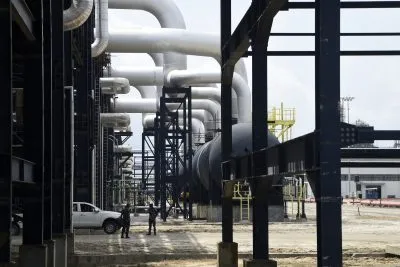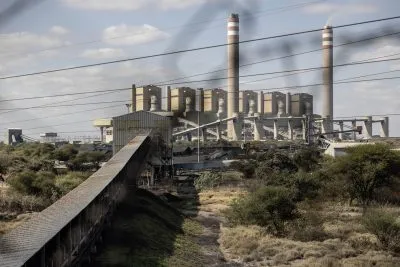Competition for Africa’s uranium resources is hotting up as the number of reactors worldwide grows steeply. China is seeking to secure supplies for its burgeoning nuclear sector and France’s military intervention into Mali highlights uranium’s increasing strategic significance. Report by MJ Morgan
About 20% of the world’s production and known reserves of uranium are already found on the continent and this share is set to get bigger – five of the 10 biggest new uranium projects coming online are African.
After the catastrophe of Fukushima in Japan, the nuclear industry understandably faced a severe examination from governments all over the world. Japan said it would scale back nuclear generation, as did Germany. Uranium prices fell and have continued to fall; they are down 14% on last year. However, with the terrifying horror of the crisis fading from memory, at least for those it did not directly affect, the sector is set for renewal. Most of the nuclear plants in development before the crisis were not cancelled. Now Japan, which faces dependence on imported oil, gas or heavily polluting coal as the alternative to nuclear power, has a new government and the plan to close the country’s 50 reactors looks almost certain to be dropped. It is even thought more likely that the sector will expand. Only Germany appears to be sticking to its post-Fukushima proposal to close its nine reactors by 2022. But this decrease is dwarfed by the number of new reactors that are planned. There are 450 nuclear reactors in the world functioning today, 65 more are already currently in construction and 95 in total are due to be commissioned by 2021.
China currently has 16 nuclear power stations and more than 30 under construction as it looks to increase its energy mix from 2% nuclear at present to 14% when the current expansion programme is finished. This is expected to put upward pressure on uranium prices, which are likely to at least recover the ground lost last year and may rise even higher. Adding further momentum to prices is the fine calibration between supply and demand that currently exists. Technically, the market is in supply deficit. According to the World Nuclear Association, uranium mines only meet 85% of the demand for power generation (although a certain amount of recycled nuclear fuel can be used). Further, a 20-year deal by which Russia has supplied uranium from decommissioned warheads expires this year and if, as seems likely, it is not renewed then some 12.5% of uranium supplies will disappear from the market.
Global production is significantly lower than it was a decade ago and with all the new reactors scheduled to open, demand is set to grow much faster than supply. However, much of the world’s uranium is being mined at a cost that is substantially in excess of the market price.
France secures supply
Niger alone currently supplies 7.5% of the world’s uranium, predominately to France. Given that 75% of France’s electricity is produced using nuclear power, securing its uranium supplies is essential to the country. French mining giant Areva (which produces 16% of global uranium output) is the largest investor in Niger, where it has two mines, at Arlit and Akouta. The company also mines in Kazakhstan and Canada and its combined production of 8,709 tonnes (in 2011) is roughly equally drawn from the three countries. However, its €1.2bn Imouraren project in Niger has the potential to produce 5,000 tonnes a year. Areva recently paid €35m to the government to compensate for delays in commissioning Imouraren.
There have been difficulties for the company before. Five French nationals were kidnapped from the Arlit mine in 2010 and four are still being held. France is going to find it tougher to secure supplies, at least on such favourable terms as in the past, henceforth. Niger’s President Mahamadou Issoufou said in February that his country would be seeking a new agreement with Areva as well as looking at the possibility of new partnerships with other nations. Areva have mined in Niger for more than 40 years (for much of this time they had a monopoly) and currently contribute around €100m a year to Niger’s treasury – an amount that President thinks is far from adequate.
“This represents just 5% of our budget, it’s not acceptable. That’s why I have asked to re-equilibrate the terms of the deal between Areva and Niger,” explained the President. However, he refused to be drawn on the details of the revised terms he is seeking, nor on whether the other nations he has in mind include China. Since France sources 30% of its uranium from Niger, the negotiations are likely to be intense.
Military intervention in Mali
French military intervention in Mali came only weeks after President François Hollande refused to act against rebels in the Central African Republic (CAR), despite a request from President François Bozizé “If we have a [military] presence, it’s not to protect a regime, it’s to protect our nationals and our interests and in no way to intervene in the internal business of a country, in this case the Central African Republic,” Hollande said in explanation, adding “Those days are over.”
France has around 250 soldiers in CAR as well as around 2,500 citizens and intervened there under the then President Nicolas Sarkozy in 2006 against rebels. Areva mines uranium in the south at the Bakouma project. Now there are 2,500 French troops in Mali with 3,330 regional troops to follow. As the Financial Times, not prone to conspiracy theories, puts it “French intervention is surely motivated by more than a simply a paternalistic sense of responsibility for its former colony.” Whether France can continue to regard this area and its resources as its pré carré (or back yard) in light of these developments remains to be seen. French special forces are reportedly already guarding Areva’s mines in Niger.
A key consideration in Mali, whatever the primary purpose of the French mission there, must be to secure the reserves in northern Mali. There is competition for these, particularly from China, who provided $117m in aid and loans to Mali back in September 2011, included a substantial provision for a hydro-electric dam in Gao. In Gao there is a uranium reserve of some 200 tonnes, while in Falea, reserves are estimated at 5,000 tonnes.
Increasing demand
Elsewhere, China’s Guandong Nuclear purchased Kalahari Minerals in Namibia for £630m last year. Kalahari’s principal asset is a 42.5% stake in Extract Resources, which owns the Husab uranium mine. The Chinese then purchased the rest of Extract Resources for $2.2bn. The mine is expected to yield some 6,800 tonnes a year and add 5% to the country’s GDP. The Namibian government has a 10% stake in the project.
There is increasing competition for Africa’s uranium, and not just from China. According to Frost & Sullivan, 22% of new electricty generation in South Africa will be nuclear by 2030.
The consultancy estimates that southern Africa’s uranium production capacity will rise dramatically from 6,628 tonnes to 21,260 tonnes by 2016. To put this in context, the entire world produced 54,610 tonnes in 2012. The report, entitled Production and Investment Forecasts for the Uranium Mining Industry in Southern Africa, identifies $8.65bn worth of uranium development projects, spread over 13 projects in Botswana, Malawi (such as Paladin’s Kayelekera mine), Mozambique, Namibia, South Africa and Zambia. Whilst the major mines (both existing and those in the process of being commissioned) are in Niger (Areva’s Arlit is the third biggest in the world) and Namibia (home of the majority Rio Tinto-owned Rosing mine), Malawi and South Africa are also significant players and there are also now projects in Zambia (Lumwana) and the CAR – as well as in those countries mentioned above.
The International Atomic Energy Agency forecast nuclear power output will rise 35%-100% over the next 20 years, while the WNA sees uranium demand over the same period rising 60%.
The principal threats to the industry are further Fukushima-style events and the substitution of safer and cheaper alternatives to uranium such as thorium. However, given that the bulk of the new reactors will be commissioned after 2020, success in developing renewable energy sources may also affect uranium demand.
Want to continue reading? Subscribe today.
You've read all your free articles for this month! Subscribe now to enjoy full access to our content.
Digital Monthly
£8.00 / month
Receive full unlimited access to our articles, opinions, podcasts and more.
Digital Yearly
£70.00 / year
Our best value offer - save £26 and gain access to all of our digital content for an entire year!
 Sign in with Google
Sign in with Google 


